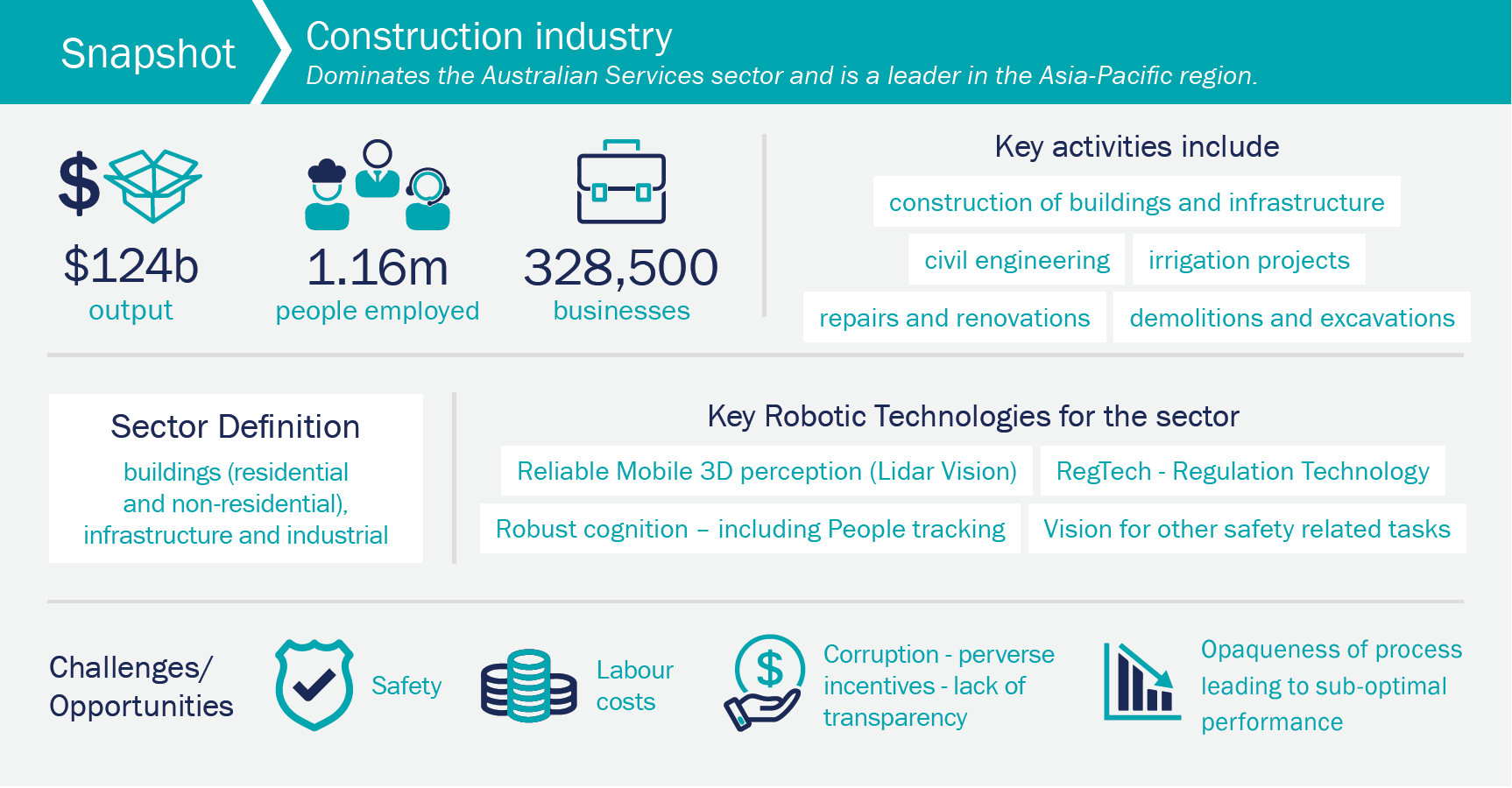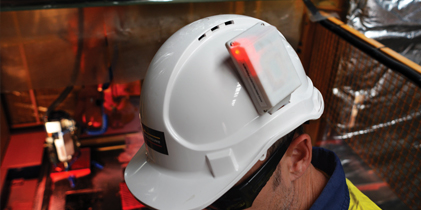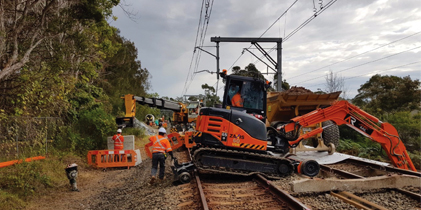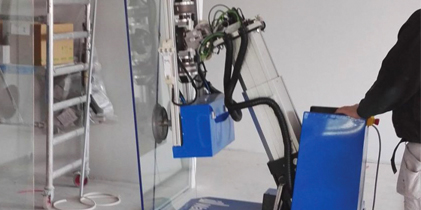
Australia’s construction industry
Construction is worth $AU124 billion to the Australian economy (7 per cent of GDP) and employs 1.16 million people. Although the sector appears large, with over $AU356 billion revenue [IB17], it is heavily fragmented, with more than 328,000 businesses operating in the industry. The largest single entity in the sector, CIMIC Group Ltd, owns two major construction companies, Leighton and Thiess and has substantial engineering services across every sector. Despite this, CIMIC accounts for only a 2.8 per cent share of overall revenue. The third largest entity contributes less than 1 per cent, and most remaining businesses are small-scale non-employer companies made up of sole proprietors and partners [IB17]. This diverse, shared market presents a considerable opportunity for cross-organisational boundary initiatives with few large single entities to resist disruption.
While construction remains labour-intensive, technology is increasingly being integrated in construction processes. Construction companies have increasingly been demanding employees with TAFE or apprenticeship qualifications, rather than relying on traditional on-the-job training. The introduction of new technologies has lengthened the working life of many skilled tradespeople, as technological advances have reduced the physical demands of some occupations [IB17]. The ratio of women to men in construction (1:8) remains well below the average for the services sector (1:0.9).
Despite a strong safety culture, construction remains a dangerous industry with 401 workers dying on construction sites between 2003-2013, and 35 construction workers seriously injured every day in Australia. Construction sites are busy places. Many contractors work side-by-side and heavy vehicles come and go. In this environment, consultation, cooperation, and coordination are essential to ensure the health and safety of everyone on site. Safety is a high priority in the construction industry due to the high number and rate of work-related fatalities and serious injuries [SWA18].


Construction is in dire need of robotic vision. It is a harsh, geographically...

Forty years ago, robots were viewed as the solution to labour shortages...

Construction is a harsh, geographically large and disparate, unstructured and...
